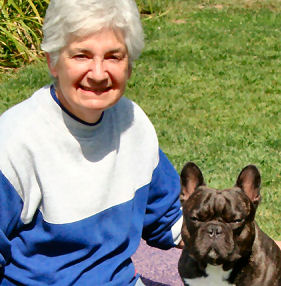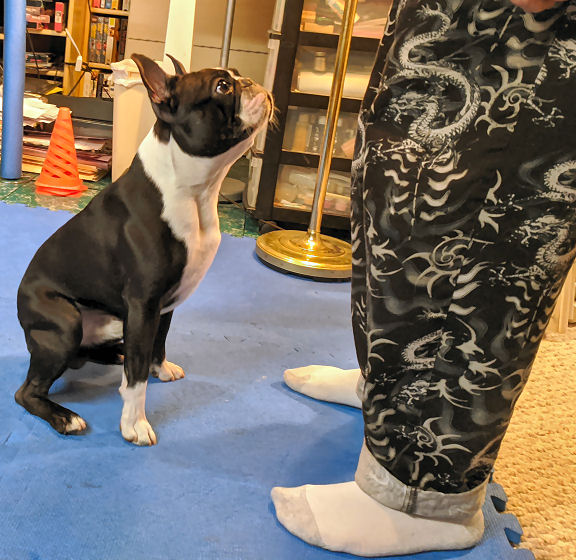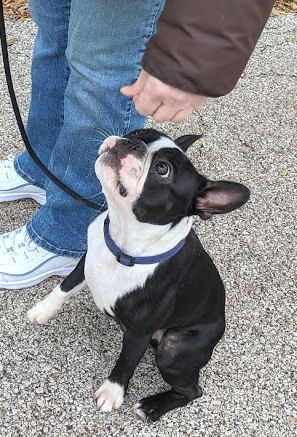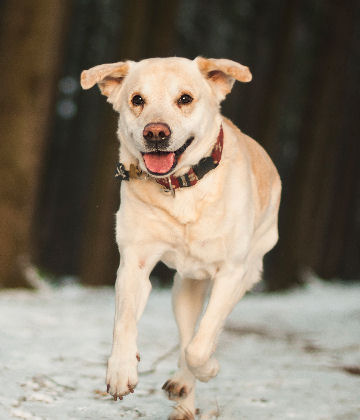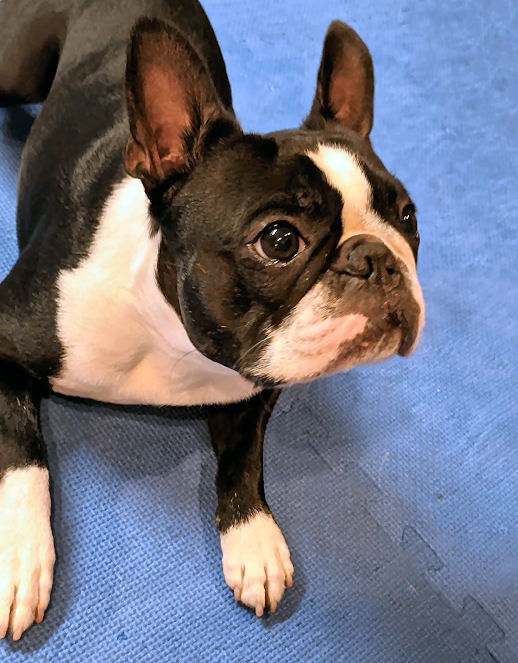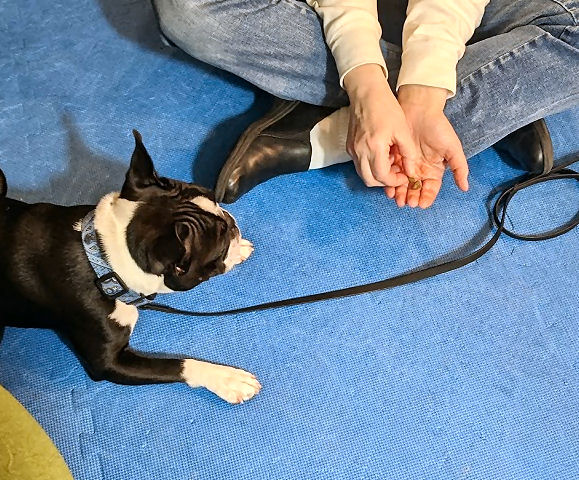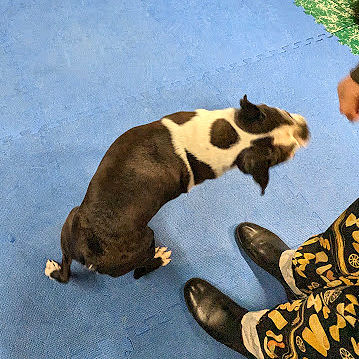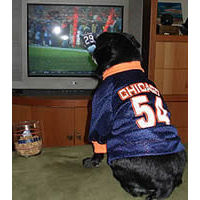Does your dog “Stay!”? Can you walk around your dog? Most people assume they can and don’t expect any problems with it. Most people would be wrong. But you can train your dog to “Stay!” and take it to the next level with the “Walk Around.”
If you tell your dog to “Sit!, Stay!” and try to walk around her, if she’s like most dogs she’ll either get up when you move or swivel on her butt to follow your motion. Few dogs can stand the idea that they can’t see you and what you’re doing.
When we introduce this in our dog training classes, people kind of say “Huh, that’s interesting. I never noticed before.” But they don’t really see the need to teach their dogs to stay in place. Having tripped over numerous dogs over the years, especially in the kitchen, we know it’s a useful skill to have. Especially when you’re trying to carry a pasta pot from the stove to the sink to drain.
“Stay!” with benefits
The foundation for being able to walk around your dog is the “Stay!” And the key to teaching your dog to “Stay!” is setting the rules and sticking to them. Remember that dogs are binary creatures – off/on, yes/no, black/white. There are no shades of gray, no understanding of “maybe.”
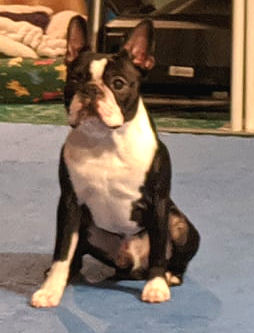
To teach your dog to stay, you must decide what “Stay!” looks like. For us, that means only the dog’s head or tail moves. Paws do not move. Not an inch, not an iota. We stay laser-focused looking at their paws and haunches. As you practice “Stay!” you’ll start to recognize the signs that your dog is about to move. Drag out your non-reward marker and prevent it. Or, if you’re too late and your dog’s already in motion, just start over.
Don’t fix anything in dog training. Ever. The “fix” becomes part of the routine that surrounds whatever it is that you’re doing. If you want your dog to “Stay!” for 30 seconds and they get up at 22 seconds, start again, don’t try to continue where you were. It’s busted, start over. Otherwise, your dog will accept that you rushing over, adjusting them, and leaving again is a normal part of “Stay!” And that’s what they’ll do, because it’s just another mystifying thing you play together.
Remember your dog doesn’t care about any of the games, exercises, behaviors, or dog sports. Your dog only cares about playing with you, and being happy together. They do the “stuff” because we ask them to and it’s fun. From a dog’s point of view, they’d just as soon roll around in a trash pile with you as be your obedience competition partner. As long as it’s fun, and they’re with you, they like doing it.
Teaching “Stay!”
With your dog sitting in front of you, hold a treat at about your eye level and slowly and steadily bring it down to your dog’s mouth. If your dog doesn’t move any part of their body other than head or tail, give them the treat when you get there. Immediately start again with another treat at your eye level. If your dog moved, jerk the treat back up to eye level and start over.
If your dog is having a really hard time staying, move the treat towards them faster. You can slow it down as your dog learns the game and what to expect. And always have a second treat ready to go as soon as you deliver the first one. If you don’t, your dog will be “one and done.” We want to sustain the stay.
That’s really all there is to teaching “stay!”. To be able to walk around your staying dog, add motion one step at a time, always rewarding to your dog’s front. Work a gradually increasing arc until your dog is okay with you circling around her. Deliver rewards to the dog’s front so you don’t pull them out of position accidentally. You’ll know when your dog is truly starting to understand the exercise when you see her head flip from one side to the other to watch you as you go around.
Use what your dog knows
Once your dog knows the “Stay!” and you can walk around them, take advantage of it! Remember to say “Stay!” while you’re carrying that pasta pot across the kitchen. Or when you’re opening the hot oven to turn the batch of cookies. Invariably, when we trip over our dogs, it’s because we’ve neglected to tell them what we want them to do. And if your dog is anything like ours, they always have to be where the action is in the house.
Stay / Walk around your dog is behavior that’s absolutely counter to every instinct your dog has. Their natural inclination is always to be in the middle of the action. Always watching everything that’s going on. Many people don’t understand that “Stay!” is difficult work for a dog. A “Stay!” is never “doing nothing.” It’s active work for your dog, so be sure to appreciate and reward the effort.

